Duration
Colors and Cultures of Northern Argentina
From $7,090 pp
Bookable From
Year-round
Trip Style
Privately Guided
Country
Argentina
Physical Rating
Average
Overview
Explore the magic of northern Argentina: vibrant colors of rainbow mountains, ancient cultures, vast salt flats, and the mesmerizing Iguazú Falls.
Spend 15 days discovering the contrasting worlds of northwest and northeast Argentina, comparing the sites, flavors, and character of these two distinct areas. Start and end your journey in the bustling, tango-filled streets of Buenos Aires.
Visit Salta, a city full of colonial charm and Andean heritage. Travel northwest via the scenic Cornisa route toward the dramatic and colorful valley of Quebrada de Humahuaca. Along the way, explore the cultural heart of Tilcara and Purmamarca, the pre-Inca fortress of Pucará, and the striking, colorful layers of El Hornocal, the well-known 'Rainbow Mountain' of the Andes. Cross the shimmering salt flats and the remote Abra del Acay before arriving in the peaceful town of Cachi. Continue through the Calchaquí Valleys, ending in Cafayate, known for its high-altitude wines and dramatic landscapes.
Next, shift to the lush northeast and discover the breathtaking Iguazú Falls, where hundreds of cascades thunder through dense rainforest. Witness the Iguazú Falls from both the Argentine and Brazilian sides, surrounded by active jungle flora and fauna.
Finally, in Buenos Aires, explore its northern and southern neighborhoods, from elegant avenues to colorful historic streets.
Highlights
- Walk Buenos Aires’ colorful neighborhoods and dive into the heart of tango.
- Discover ancient Andean culture in Salta and the ancient Pucará ruins in Tilcara.
- Marvel at the rainbow hills of Humahuaca & El Hornocal.
- Traverse the vast and wonderful salt flats.
- Sip wines from the high-altitude, world-renowned Calchaquí Valleys, and blend your own vintage in Cafayate.
- Witness the power of Iguazú Falls from both Argentina & Brazil while staying in a jungle lodge.
- Explore colonial villages, and see Inca settlements and mummies.
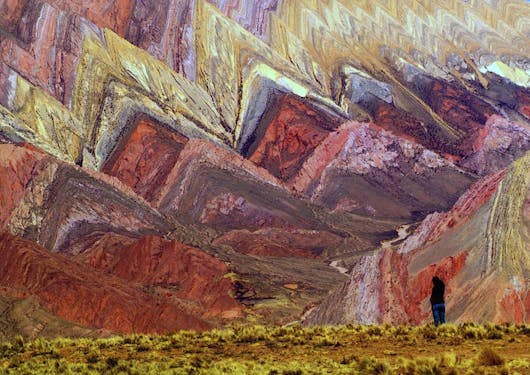
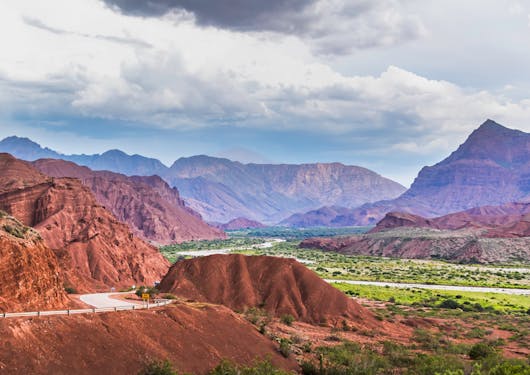
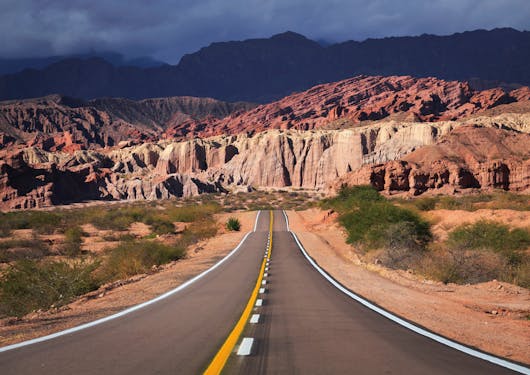
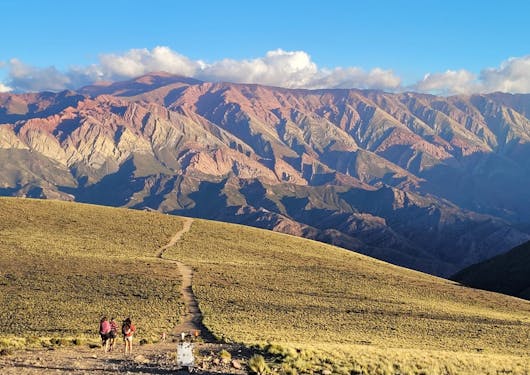
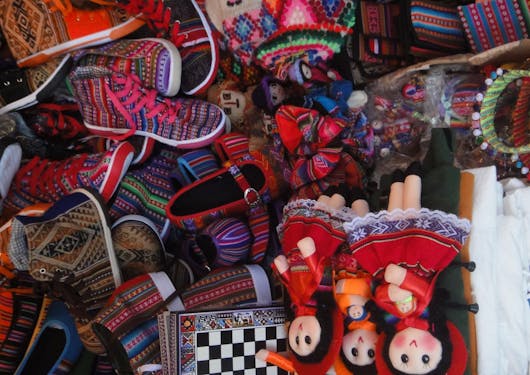
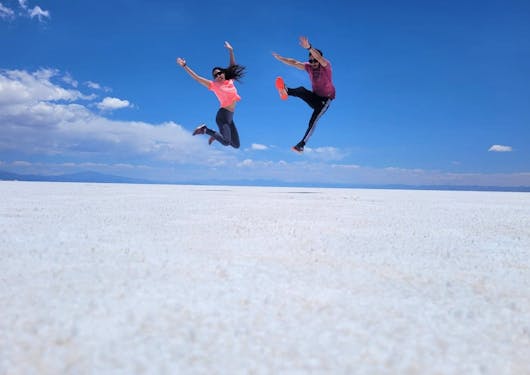
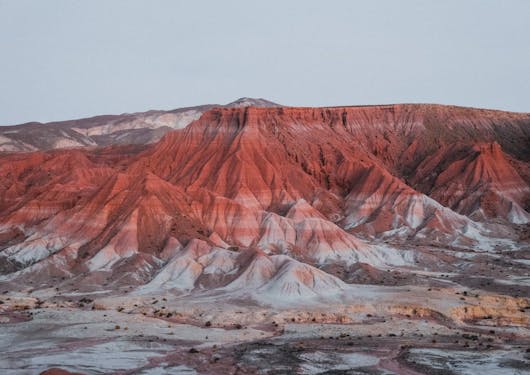
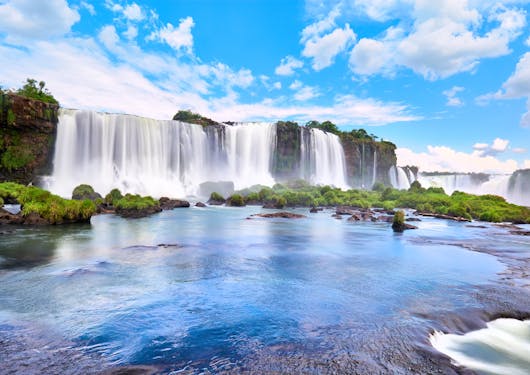
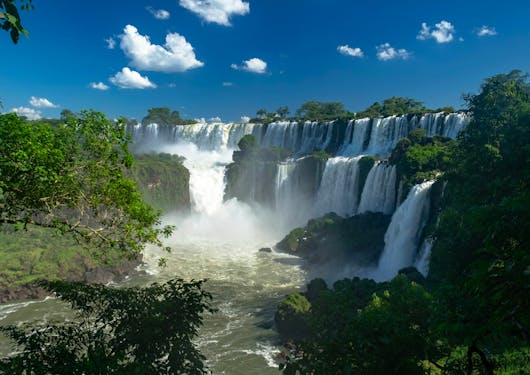
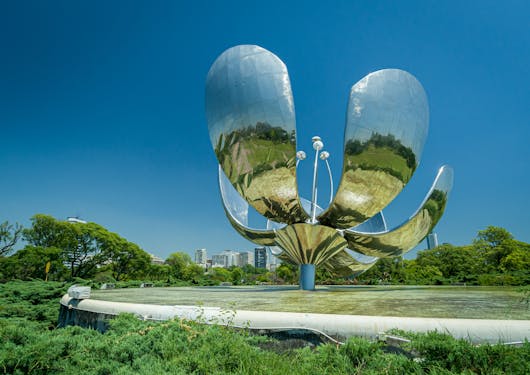
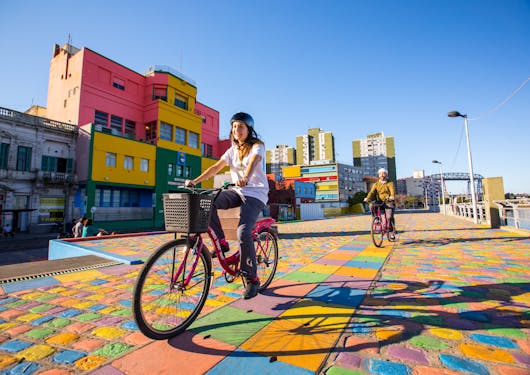
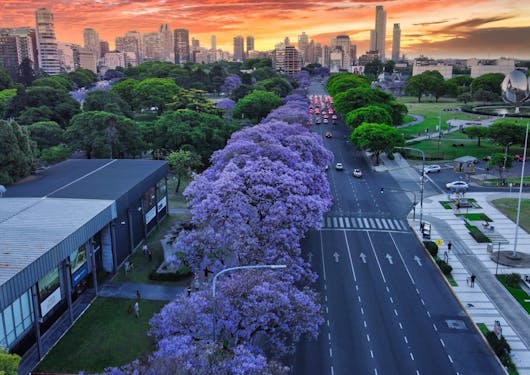
Itinerary Overview
Day 1: Buenos Aires – Arrival – Afternoon City Tour
Day 2: Buenos Aires – Salta – Half Day Salta City Tour + MAAM Museum
Day 3: Salta – La Cornisa & Yungas Drive + Quebrada de Humahuaca – Tilcara
Day 4: Tilcara – Pucará de Tilcara, Uquia & El Hornocal
Day 5: Tilcara – Salt Flats, Puna, Abra Del Acay & La Poma – Cachi
Day 6: Cachi – Las Pailas Archaeological Site Hike in The Calchaquí Valleys
Day 7: Cachi – Molinos & Colomé – Cafayate
Day 8: Cafayate – Full-day Wine Experience & Make Your Own Blend
Day 9: Cafayate – Quebrada de las Conchas & La Yesera – Salta
Day 10: Salta – Iguazú – Flight to Iguazú - Morning at Leisure
Day 11: Puerto Iguazú – Argentinian Falls
Day 12: Puerto Iguazú – Brazilian Falls
Day 13: Buenos Aires – Puerto Iguazú – Flight to Buenos Aires + Dinner Tango Show
Day 14: Buenos Aires – Half Day City Northern Tour
Day 15: Buenos Aires – Departure
Seasonal Notes
☀️ Seasonality and the Best Time to Travel
This itinerary is designed for year-round departures.
The best time depends on personal preferences. For ideal weather and fewer tourists, October to mid-December and March to April are excellent choices. These months offer comfortable temperatures, vibrant landscapes, and better availability. Summer (mid-December to February) is also a good time to go, though you can expect warmer days and larger crowds, especially around the Argentinian side of the Falls.
🔺 High Season (mid-December to February)
This is Argentina’s summer and national holiday period, with hot days, strong sun, and occasional summer rains.
In Iguazú, the falls are at their most powerful due to the rainy season — an unforgettable sight. Expect hot, humid conditions, more visitors, and some slippery trails, but the experience remains spectacular.
In northwest Argentina, especially around Salta and the valleys, this is the greenest time of year. Summer rains bring vibrant landscapes and a lively atmosphere with festivals and markets. While rains can occasionally impact access to some areas, they're usually manageable and add to the region’s dynamic character. Days are warm and sunny, while nights tend to be fresher, with a gentle drop in temperature after sunset, given the altitude in many parts of the region.
Ideal for travelers who enjoy lush scenery, cultural festivities, and don’t mind the heat or occasional rain.
🔷 Mid / Shoulder Season (October to mid-December & March to April)
Some of the best overall conditions for travel, with milder weather, fewer crowds, and beautiful seasonal contrasts.
In Salta and Jujuy, spring (October–November) brings blooming cactus flowers and clear skies — perfect for hiking and scenic drives. March and April paint the valleys in golden tones, creating stunning landscapes with ideal temperatures.
In Iguazú, the jungle remains lush, the falls are still impressive, and the heat is more manageable, making for a comfortable and less crowded experience.
Great for travelers seeking balance: excellent weather, vibrant nature, and a more relaxed pace.
*Try to avoid Easter holidays if possible — if you’re thinking of traveling in March or April, be sure to check the Easter holiday dates, as they vary annually.
🔻 Low Season (May to September)
A quieter time to explore, with fewer tourists and a slower rhythm.
In the Northwest, this is the dry season. While the valleys lose some of their summer greenery and take on more muted tones, high-altitude areas like Humahuaca and the puna maintain their striking visuals. Sunny days and cool nights are the norm, especially at elevation.
In Iguazú, this is the cooler season, but temperatures remain warm and tropical. Rain is usually less frequent, and the park is notably less crowded, except during winter school holidays in July.
A good time for those who value peace, open landscapes, and chill weather for outdoor exploration.
*It's advisable to avoid Argentina’s winter school holidays (in July) when the parks can get quite busy with local tourists. Check on these dates, as they vary annually.
Itinerary
Day 1 Arrival at Buenos Aires - Half-day Southern City Tour
Day 2 Buenos Aires - Salta - MAAM Museum and City Exploration
Day 3 Salta - Drive through Yungas & Quebrada de Humahuaca - Tilcara
Day 4 Tilcara - Pucará de Tilcara & El Hornocal
Day 5 Grand Salt Flats - Puna - Abra del Acay - Cachi
Day 6 Hike at Las Pailas Archeological Site
Day 7 Cachi - Molinos & Colomé - Quebrada de las Flechas - Cafayate
Day 8 Cafayate – Full Day Wine Experience + Make Your Own Blend
Day 9 Cafayate – La Yesera– Quebrada de las Conchas – Salta
Day 10 Salta - Puerto Iguazú
Day 11 Puerto Iguazú – Full Day Argentinian Falls
Day 12 Puerto Iguazú – Brazilian Falls and Afternoon at Leisure
Day 13 Buenos Aires - Dinner, Dance Lesson & Tango Show
Day 14 Buenos Aires - Northern Bike City Tour
Day 15 Buenos Aires - Departure
Customization
Route Map

Inclusions & Exclusions
Private airport transfers upon arrival and departure are included at every destination.
Bilingual host included in the first arrival transfer
Bilingual guide for all excursions
3 nights of accommodation in Buenos Aires with breakfast
2 nights in Salta at a boutique hotel with breakfast
2 nights in Tilcara in a hotel with breakfast
2 nights in Cachi in a hotel with breakfast
2 nights in Cafayate in a boutique hotel with breakfast
3 nights in Puerto Iguazú at a jungle lodge with breakfast
Half-day South City Tour in Buenos Aires (private)
Half-day City tour with MAAM Museum in Salta (private)
Full-day Scenic Drive from Salta through Yungas & Quebrada de Humahuaca (private)
Full-day Visit to Pucará de Tilcara & Hornocal (private)
Full-day Visit to Grand Salt Flats & Puna (private)
Full-day Hike at Las Pailas Archeological Site (private)
Full-day Scenic drive to Cafayate, through Colomé & Los Molinos (private)
Full-day Cafayate: Wine Tasting and Blending Game (private)
Full-day Scenic drive to Salta, through Quebrada de las Conchas & La Yesera (private)
Full-day visit to the Argentinian Side of the Iguazú Falls (private)
Half-day visit to the Brazilian Side of the Iguazú (private)
Dinner Tango Show in Buenos Aires + 30-minute dance lesson (shared)
Half-day Northern Biking Tour in Buenos Aires. Bike, helmet, and safety gear included (private)
13 breakfasts
2 lunches during excursions
1 dinner
Soft drinks and water are included during lunches and dinners, where specified
Entrance fees to National Parks and reserves (all destinations)
24/7 emergency contact during travel
Detailed welcome letter with travel information, destination notes, and schedule of services
Transportation & Guides
Accommodation
Activities & Experiences
Meals
Additional Services
International and domestic airfare
Services and meals not mentioned in the itinerary
Early check-in, late check-out, and other hotel extras
Personal expenses
Tips for guides and hotel staff
Visa fees or travel documentation
Travel insurance
Pricing
Prices exclude flights to/from the destination.
Prices are for double room occupancy unless indicated otherwise.
The pricing applies to the land portion of the trip. Internal flights can be quoted and booked upon request. To issue the tickets as soon as the itinerary is confirmed, airfare must be paid in full along with the deposit, unless you prefer to wait and book the flights at a later time.
Contact us for pricing for groups larger than 10.
Deposit per person
30% of the trip price
Shared Room - sleeps 2 - price per person
3* Hotels: $7,090 4* Hotels: $7,690
Optional Add-ons
Ask us if you want to upgrade or modify the activities.
Payment & Cancellation Policy
This trip is available year-round.
At checkout, choose your preferred departure date and pay the deposit. Yugen Earthside’s standard Payment & Cancellation Policy applies.
Book With Confidence
- Your deposit is fully refundable for 30 days when you book 120+ days in advance and pay by bank transfer.
- If you pay by credit card, the card processing fees are non-refundable.
- We’ll confirm availability for your chosen dates within 3 business days. If confirmed, you’re all set! If not, we’ll help you adjust your dates or refund your deposit.
Sustainability
♻️ Our Philosophy and Commitment to Sustainability
We believe that travel should enrich both the traveler and the destination. Our itinerary is thoughtfully designed to immerse guests in northern Argentina’s natural wonders while honoring and protecting the unique ecosystems and cultures that make this region so extraordinary. We aim to collaborate with local communities, support conservation efforts, and strive to work with suppliers who share our commitment to responsible tourism, always seeking a balance between quality experiences and positive impact.
🌳 Environmental Initiatives
While some destinations in this itinerary face challenges in implementing sustainable practices or are already heavily visited, we seek to strike a balance between must-see attractions and quality experiences whenever possible.
We also follow Leave No Trace principles, ensuring that all outdoor activities are conducted with respect for the natural environment.
In Buenos Aires, a bike tour offers a low-emission, low-impact way to explore the city's cultural heart, reducing reliance on motorized transport.
🛌 Accommodation Initiatives
Each accommodation has been chosen not only for its quality and comfort but also for its environmental and social values. Whenever possible, we prioritize responsible hotels—those that are locally owned or that demonstrate a clear commitment to sustainability and community engagement. However, in some destinations, options that meet both our standards of quality and responsibility are limited. In those cases, we aim for a thoughtful balance, combining responsible properties with others that may not be fully sustainable but still offer excellent service and comfort. We always strive to ensure that, at the very least, they incorporate some form of social or environmental practice or support the local economy in meaningful ways.
Please note that accommodation is subject to availability. While we always try to secure our preferred responsible options, it may not always be possible. In such cases, we select the best available alternatives, keeping in mind the overall quality of the experience.
In Salta, our selected hotels reflect a strong commitment to sustainability. Both the 4-star boutique hotel Kkala and the 3-star alternative are certified with the “Hoteles más Verdes” eco-label. This certification ensures a management system focused on continuous improvement and the conservation of the destination’s cultural and natural heritage.
In Cachi, the 4-star option, El Cortijo, is housed in a restored colonial building made with local materials like adobe and wood. It also holds a Bronze certification from “Hoteles más Verdes”, highlighting its sustainable practices and cultural preservation efforts. The 3-star selection, La Merced del Alto, shares the same certification and integrates harmoniously with the surrounding Calchaquí Valleys.
In Tilcara, the 4-star Posada de Luz is committed to environmental care through initiatives such as LED lighting, refillable amenities, towel reuse policies, and promoting ecological awareness among staff and guests. For the superior itinerary, there is currently no 4-star property with formal sustainability certification; however, the hotel respects its natural setting through thoughtful local design.
In Cafayate, the classic 3-star hotel implements solar thermal systems, LED lighting, and organic amenities, and maintains an organic garden that supplies fresh produce to its kitchen. The 4-star hotel in the superior category holds a Bronze “Hoteles más Verdes” certification and showcases a strong dedication to sustainable tourism and cultural heritage.
In Puerto Iguazú, the 4-star Selvaje Lodge is nestled in the rainforest and built to minimize environmental impact, with elevated walkways and low-impact architecture. While the classic 3-star hotel in Iguazú doesn’t apply strong sustainability practices, it has been selected for its respectful integration into the natural surroundings and good quality service.
In Buenos Aires, our selected 3-star hotel incorporates sustainable materials and green architecture to ensure a comfortable, environmentally responsible stay. The 4-star property also emphasizes waste and water reduction and actively promotes local culture.
🤝 Social Initiatives
This itinerary honors the cultural heritage of northwest Argentina by promoting meaningful engagement with local communities. Key sites such as the Salt Flats (Salinas Grandes) and El Hornocal are managed by indigenous and rural cooperatives, allowing visitors to experience these natural wonders through a local lens while supporting community-led conservation. Experiences like Pucará de Tilcara and Las Pailas archaeological site are guided by locals who share the region’s pre-Hispanic history and Andean traditions. Stops in towns like Seclantás, Uquía, and Molinos further highlight traditional crafts and lifestyles, contributing to cultural preservation through tourism.
💼 Economic Initiatives
We strengthen the local economy by working with family-run accommodations, independent guides, and small-scale providers that reinvest in their communities. In both the Northwest and Iguazú, our partners prioritize local hiring, promote fair labor conditions, and source food and materials locally whenever possible. The itinerary emphasizes slow travel, with extended stays and immersive activities that spread economic benefit across multiple towns and regions. Additionally, we promote travel during shoulder and mid-seasons (October–December and March–April) to reduce pressure on peak dates and encourage a more even distribution of tourism income throughout the year.
Health & Safety
Be sure you have traveler's insurance.


